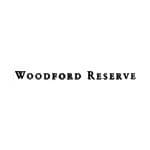Woodford ReserveAmerican Whiskey
The original distillery was built by Elijah Pepper, who had been making whiskey in the county since 1797. On his death in 1831, the business was taken over by his son Oscar, who built the present distillery building in 1838. Soon afterwards, a system of steam pipes was installed into the stone warehouses to allow more than one hot-cold cycle per year, making the Oscar Pepper Distilleries to practice climate-control.
In 1833, Dr. James Crow, sometimes referred to as the ‘Father of Bourbon whiskey’ began work at the distillery, developing over more than twenty years some of the methods that led to legal definitions of ‘straight’ bourbon. Crow is credited with bringing a hitherto unheard-of scientific rigour to the distillation methods of the day, greatly increasing the understanding of the various stages involved in making whiskey, particularly the sour mash process. His Old Crow bourbon was regarded as the apex of fine bourbon in the mid-to-late 1800s, and crucially he kept a written record of his findings that greatly benefited fellow distillers and future generations.
Following Oscar Pepper's death in 1865, the distillery was bought in 1878 by Leopold Labrot & James Graham. Their company was the custodian of the distillery until 1940, during which time two new limestone warehouses were constructed on the site. However, in the early 1940s, Labrot & Graham went bankrupt, crippled by wartime restrictions.
The new owners were Brown-Forman, who ran the distillery until 1968, before being forced to cease production by adverse market conditions. The mothballed distillery was sold in 1972 and allowed to fall into disrepair as the site was used for farming.
Thankfully, that's not the end of the story. In 1993, Brown-Forman took the decision to buy back the old Labrot & Graham distillery and after a multi-million refurbishment, bourbon distillation was recommenced in 1994. Unusually, however, the whiskey was made with small Scottish pot stills from Forsyths in Rothes. Soon after, a range of distillation and maturation experiments began which would later become the Masters Collection.
1996 was a big year for the distillery. A tourist visitor centre was opened and the first bourbon to be sold as Woodford Reserve reached the market. This was not the pot-distilled whiskey made on site, however, but small batches of honey barrels from Brown-Forman's other distillery in Shively, Louisville - home of Early Times and Old Forester. Later, the barrels distilled at Shively but earmarked for Woodford Reserve were moved to finish ageing in Versailles before bottling.
Since 1999, Woodford Reserve has been the official bourbon of the Kentucky Derby, releasing a limited edition bottling each year. In 2003, after the expansion of the on-site visitor centre (which now hosts up to 100,000 tourists a year), the pot-distilled bourbon made at the distillery (now renamed Woodford Reserve) was incorporated into the Woodford Reserve blend for the first time.
Master distiller Lincoln Henderson retired in 2006, the year after the introduction of the first annual release of the experimental whiskies made at the distillery, which are bottled as Woodford Reserve Master's Collection. His successor Chris Morris now provides the signature on each batch of Woodford Reserve.
Filter
Price Range
Bottling Status
Cask Type
Strength
Limited Edition
Flavour Profile
Colouring

Woodford Reserve Double Oaked
$63.58
($90.83 per litre)

Woodford Reserve Distiller's Select
$39.85
($56.94 per litre)

Woodford Reserve Batch Proof (61.6%)
$134.83
($192.61 per litre)

Woodford Reserve Distiller's Select Holiday Edition2022 Release
$43.09
($61.56 per litre)

Woodford Reserve Malt
$42.01
($60.02 per litre)

Woodford Reserve Distiller's Select Holiday Edition2021 Release
$43.09
($61.56 per litre)

Woodford Reserve Baccarat Edition
$1,483.09
($2,118.70 per litre)

Woodford Reserve Wheat Whiskey
$42.01
($60.02 per litre)

Woodford Reserve Rye Whiskey
$42.01
($60.02 per litre)



 Woodford Reserve
Woodford Reserve